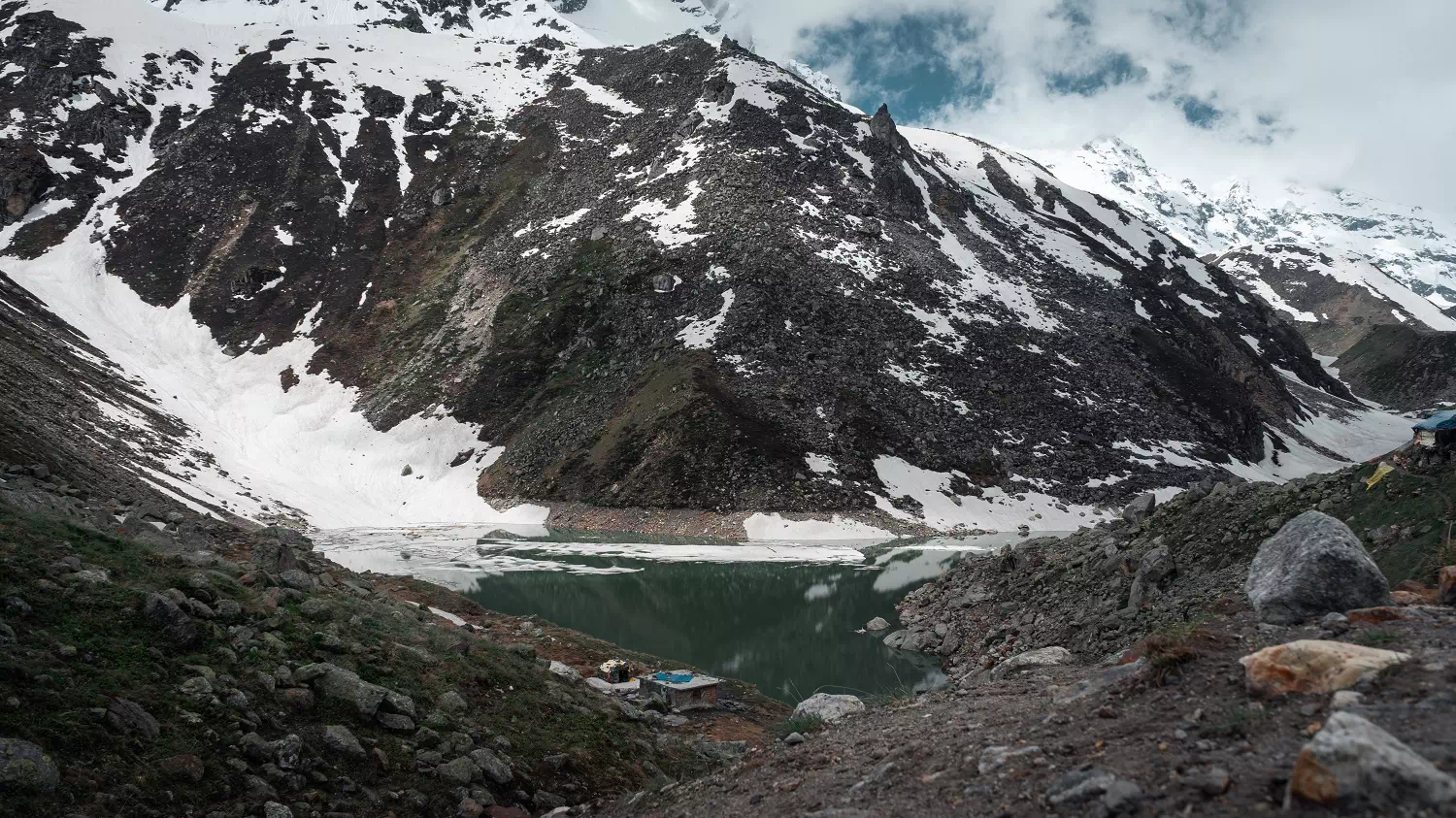The temperature during the Satopanth Tal trek varies greatly depending on the time of year and the altitude. Generally, the trek tends to be chilly all year round, with colder nights and milder days. Here’s a breakdown of the temperature ranges:
Summer (May to June):
During the summer months of May and June, the days offer a comfortably cool range of 10°C to 20°C at lower altitudes, providing a pleasant atmosphere for trekking. At higher altitudes, the temperatures range from 5°C to 15°C. Nights remain cool but not overly cold, with readings between 0°C to 10°C at lower altitudes and -5°C to 0°C at higher altitudes.
Monsoon (July to August):
The monsoon season brings slightly lower temperatures. Daytime temperatures range from 10°C to 15°C at lower altitudes and 5°C to 10°C at higher altitudes, offering a refreshing trekking experience. Nights become cooler, with temperatures ranging from 0°C to 5°C at lower altitudes and -5°C to 0°C at higher altitudes.
Autumn (September to October):
In autumn, the days remain cool and comfortable for trekking. At lower altitudes, temperatures range from 5°C to 15°C, providing an enjoyable trekking environment. Higher altitudes experience temperatures from 0°C to 10°C. As the season progresses, nights gradually become colder, with readings dropping to -5°C to 0°C at lower altitudes and -10°C to -5°C at higher altitudes.
Winter (November to April):
Winter brings chilly conditions, especially at higher altitudes. During the day, temperatures range from -5°C to 5°C at lower altitudes and -10°C to 0°C at higher altitudes. Nights can be very cold, with readings between -15°C to -5°C at lower altitudes and -20°C to -10°C at higher altitudes. It’s important to be well-prepared for the cold weather during this season.
Remember, these are just average temperature ranges, and actual temperatures may vary based on weather conditions. It’s always wise to be ready for colder weather, particularly at higher altitudes and during the night. Make sure to pack appropriate clothing, including thermal layers, a warm jacket, and don’t forget a hat and gloves.

































